This technique has a lower black-to-white ratio than kakeami カケアミ, which makes it preferable to shade softer things, like sand and soap bubbles.
Manga: Black Jack, ブラック・ジャック (Chapter 2, シャチの歌)
Examples
Although some artists do use tenbyou in manga, it's generally not used as other shading techniques are more popular.To have a better idea, a character in the series Bakuman. バクマン。 did use stippling when rendering backgrounds.
Anime: Bakuman. バクマン。 (Episode 23)
- The stippling process of Nakai Takurou 中井巧朗.
As you can see above, it's a process that takes time and patience, but the result looks pretty:
Manga: Bakuman. バクマン。 (Chapter 31)
- The leaf is shaded using stippling.
Manga: Bakuman. バクマン。 (Chapter 31)
- na... nanda kore
な・・・なんだこれ
Wh... what's this. (emotive right-dislocation) - sugee na...
スゲーな・・・
It's amazing...- sugee スゲー is sugoi 凄い with relaxed pronunciation.
- tenbyou de haikei toka kaichatteru jan
点描で背景とか描いちゃってるじゃん
The backgrounds [and other stuff] are drawn using stippling. - shunkan ja ikura Nakai-san demo konna kaki-kata muri daro......
週刊じゃいくら中井さんでもこんな書き方無理だろ・・・・・・
In a weekly serialization, even Nakai-san [won't be able to use] this way of drawing......- muri
無理
Impossible.
Unreasonable. Unmanageable. That can't be done or that won't work. - The character is saying that, despite Nakai's abilities, it'd be impossible to draw using stippling in a weekly serialization, since he would have to render dozens of pages every week using this technique and there just isn't enough time.
- muri
- suggoi kirei na e dayone
すっごいキレイな絵だよね
The drawing is extremely pretty, isn't it.
In manga, most patterns made out of dots you'll see aren't created by drawing the dots one by one.
Instead, they're either a pattern that comes in a screentone that's just pasted on the drawing, or they're a digital pattern that's simply filled using software.
The term tenbyou 点描 ends up referring mostly to light background shapes created and surrounded by dots. For example:
Manga: Aho Girl, Aho Gāru アホガール (Volume 1, Chapter 3, Page 26)
- Context: Akkun あっくん, who doesn't have friends, makes his first friends.
- genki...... dashite kudasai ne?
元気・・・・・・出して下さいね?
[Cheer up,] okay? - yoshi yoshi
よしよし
[There there]. - yokatta nee Akkun
よかったねーあっくん
[Isn't that great,] Akkun. - nadenade
なでなで
*pat pat*- Reduplication of:
- naderu
撫でる
To pat. To caress.
- ...yasashisa ga tsurai...
・・・優しさがつらい・・・
...kindness [hurts]...
Note that not every dot you see in manga is called tenbyou. For instance, regular dot patterns from screentones like halftones and polka dots aren't tenbyou.
Manga: Gabriel DropOut, ガヴリールドロップアウト (Chapter 5)

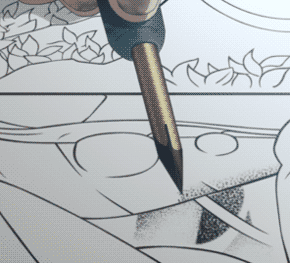
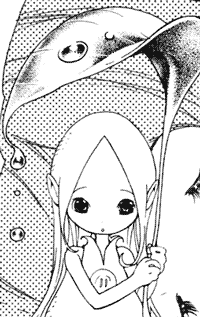
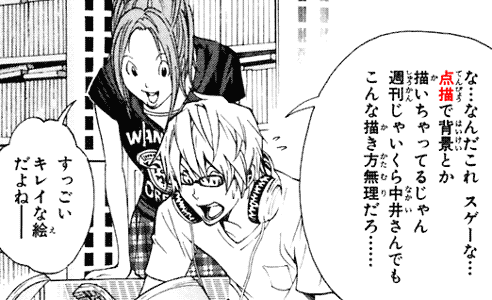
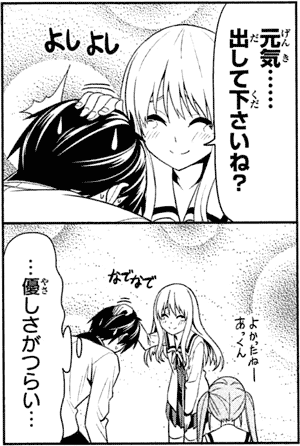
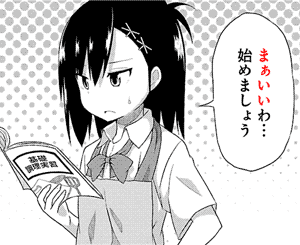
No comments: